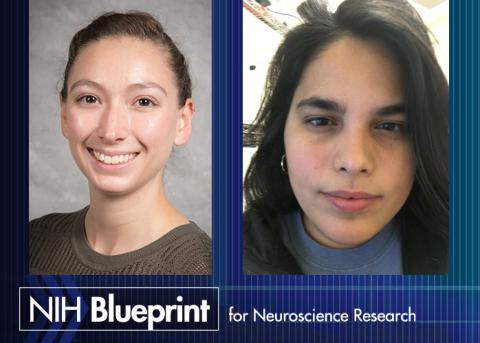Two Brown neuroscience graduate students win NIH F99/K00 award

Valerie Estela, a member of Rebecca Burwell’s Laboratory, said she was “stunned” upon learning she had received the award. Both Estela and Gabriela Manzano Nieves, a member of Kevin Bath’s laboratory, expressed excitement that having funding takes pressure off applications for fellowships, allowing them to focus on finding labs that are the best matches for them.
Now in its second year, the NIH Blueprint Diversity Specialized Predoctoral to Postdoctoral Advancement in Neuroscience Award aims to “enhance the ability of predoctorates from underrepresented backgrounds to progress in what is often perceived as a challenging research career environment,” according to its call for applications. In 2011, only 5 percent of neuroscience researchers in the tenure track were from underrepresented backgrounds, compared to 9 percent of postdoctoral scholars and 14 percent of graduate students, according to a survey of neuroscience programs.
Applicants were judged on a number of criteria, including their commitment to a career in neuroscience, the strength of their training plan and the quality of their current research projects as graduate students. The awards to Estela and Manzano were among about 20 total granted by the NIH through this program. “What they want to know is: Do you have a clear understanding of what it takes (and) what type of environment is one in which you’ll be successful?” Manzano said. Manzano, currently entering her sixth year of graduate studies, investigates the effects of early life stress on fear association circuitry in mice. Stress is induced by limiting the amount of bedding materials that mothers have to create nests for their young. Consequently, mothers spend less time caring for their pups and treat them more roughly than mice in a non-stressful environment. When the pups are older, they are fear conditioned by learning to associate certain tones with a shock. Manzano’s study shows that mice who experienced early life stress are able to remember their fear associations but fail to express it through freezing behavior. These mice also exhibited earlier maturation of certain structures that are part of the emotional learning and expression circuitry. Manzano is now beginning to use in vivo electrophysiology, a technique that involves directly recording the electrical activity of brain cells, to understand how this accelerated maturation arises from the interactions between various brain regions in the circuit.
Her work researching structures related to emotional learning began as an undergraduate working in a fear learning lab at the Río Piedras campus of the University of Puerto Rico. Manzano credits Professor Gregory Quirk and his laboratory for being a strong source of mentorship that allowed her to develop research techniques and pushed her toward a career in neuroscience. Manzano hopes to continue studying emotional learning, such as reward learning and aversive learning, in her postdoctoral fellowship. However, she will shift her focus away from early life stress. Though she believes it is a necessary area of study, Manzano wants to explore other topics that will allow her to learn a range of experimental techniques. While Manzano is working towards entering a tenure-track position following her fellowship, she isn’t “married to the idea.” “If I’m four years into my postdoc and it doesn’t seem realistic that I’ll get tenure, then I’m okay with walking away,” Manzano said. “There’s alternative ways to do things that you think are impactful. I don’t think tenure track is the only way.” Whether she ultimately teaches, conducts research or works in public policy, she hopes to improve the lives of people experiencing psychological disorders.
Entering her fifth year of graduate studies, Estela researches learning and memory by training rats in a spatial memory task. She also uses in vivo electrophysiology in conjunction with intracranial stimulation, which allows her to reward the animals when they are correct by stimulating a region that releases a rush of dopamine. The rats’ objective is to learn to associate each side of a maze with an object. As they perform the task, neurons in their postrhinal cortex and hippocampus are being recorded. These neurons have been observed to respond specifically to conjunctions, such as a specific object in a specific location, more so than to the object or the location separately. Through her research, Estela hopes to gain a deeper understanding of the mechanisms behind these conjunctions, including when they emerge in learning and the purpose they serve.
Estela gained extensive research experience prior to coming to Brown. As an undergraduate at Lehigh University in Pennsylvania, she worked in a behavioral ecology lab studying the mating habits of convict cichlid fish. After graduation, she spent three years in industry working on the preclinical development of new drugs. As a postdoctoral fellow, Estela would like to continue researching learning and memory. She hopes to enter a tenure-track position after completing the fellowship. Though she remains uncertain about how research-intensive she would like the environment to be, Estela thinks she would prefer one that is centered on teaching with ample opportunities for research. “Right now, I’m trying to figure out what kinds of techniques I would be able to bring with me,” Estela said. “Because if I’m not going to a huge institution like Brown, I wouldn’t be able to do very expensive techniques like (in vivo electrophysiology).” At her postdoctoral institution, she hopes to learn lower cost methods that she can use to start her own lab in the future.



